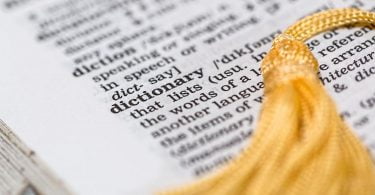Each March, Women’s History Month is celebrated in England, America, and Australia. Canada holds theirs in October, and many other celebrations take place around the world throughout the year, as a way to pay tribute to the contributions made by women to society.
Women’s History Month
The history of Women’s History can be traced back to the first International Women’s Day on March 8th 1911. However, it wasn’t until 1980 when this date was used as the basis for Women’s History Week in the United States. This continued until 1987 when the National Women’s History Project (NWHP) led the coalition that lobbied Congress to designate a month to women’s history.
The NWHP was founded in California in 1980, by Molly MacGregor, Mary Ruthsdotter, Maria Cuevas, Paula Hammett and Bette Morgan, to broadcast women’s historical achievements.

They realised that one of the biggest factors affecting women’s history was the lack of educational material that focuses on women, stating that as recently as the 1970s, women’s history was “virtually an unknown topic” both in national curriculums and in terms of public knowledge. This led to the initiation of many school programs and community activities, gaining the support of national organisations in lobbying for an offical Women’s History Week, honouring and celebrating the achievements of American women.
In February 1980, President Carter issued the first Presidential Proclamation declaring the week of March 8th as National Women’s History Week.
“Too often the women were unsung and sometimes their contributions went unnoticed. But the achievements, leadership, courage, strength and love of the women who built America was as vital as that of the men whose names we know so well.”
The following year, Congress passed the resolution Pub. L. 97-28, which requested the President to proclaim the week of March 8th as National Women’s History Week every year.
One week not enough
Over the coming years, many departments of education encouraged Women’s History celebrations and worked towards achieving equity goals within classrooms, including the distribution of curriculum materials, essay contests, and special community programs. However, it was clear that one week wasn’t enough, and a greater national effort was needed.
By 1986, 14 states had declared March as Women’s History Month, building the momentum to lobby Congress for an official declaration. The petitions of NWHP were successful, with Congress passing Pub. L. 100-9 which saw March 1987 recognised as the first official Women’s History Month.

nwhp.org
Since 1995, Presidents have issued annual proclamations designating the month of March as Women’s History Month, and honouring the achievements of American women.
US Federal Report
In 2011, the Barack Obama administration produced the first comprehensive federal report on women’s status for almost half a decade. The report, Women in America: Indicators of Social and Economic Well-Being, looked at women’s status and how it had changed over time, since the 1963 report from the Commission on the Status of Women.
Each year, the National Women’s History Project dedicates a theme for the month. This year the theme is ‘Working to Form a More Perfect Union: Honouring Women in Public Service and Government’. Previous themes include ‘Celebrating Women of Character, Courage, and Commitment’, ‘Women Inspiring Innovation Through Imagination’ and ‘Women: Builders of Communities and Dreams’.

They also provide information and training in women’s history for educators, community organisations, and parents, and promote “a multicultural women’s history perspective by honouring women of diverse cultural, ethnic, occupational, racial, class, and regional backgrounds.”
Why is Women’s History Month so important?
Outside of America, the celebration of Women’s History Month is much newer, and often neglected. The first recorded celebration in Australia wasn’t until 2000, initiated by Helen Leonard, convenor of the National Women’s Media Centre, working with the Women’s Electoral Lobby. The organisation of annual Women’s History Month celebrations is now part of the work of the Australian Women’s History Forum.
The History of Women’s History Month in the UK is a little less clear. There was a website set up, and recorded activities for some years, yet it does not seem to run on the same national scale, despite the backing of many individuals and groups.
A lack of dedication to women’s history is a problem that works its way into our curriculums and influences the representation of women for young people.
“Educators are willing, often eager, to introduce women’s history. But they lack materials and support. Only three percent of educational materials focus on women’s contributions.” –nwhp.org
If you think back to your own history lessons and the names of incredible women don’t come to mind, then it’s time to change that. All women – women of colour, disabled women, LGBT+ women, young and old women, women around the world – deserve the same recognition that is more freely granted to men.
It’s time to make sure that all young people know the roles and contributions of women throughout history. It’s time that young girls have inspirational role models, those honoured for their actions and achievements. There isn’t a shortage of female role models; there are countless successful women within all fields, from science to technology, business, sport, politics, the military and more; there’s just a lack of recognition. But fortunately, we are trying to change that.
So this March, take a her-story lesson, and use this opportunity to learn something new about women’s history.









